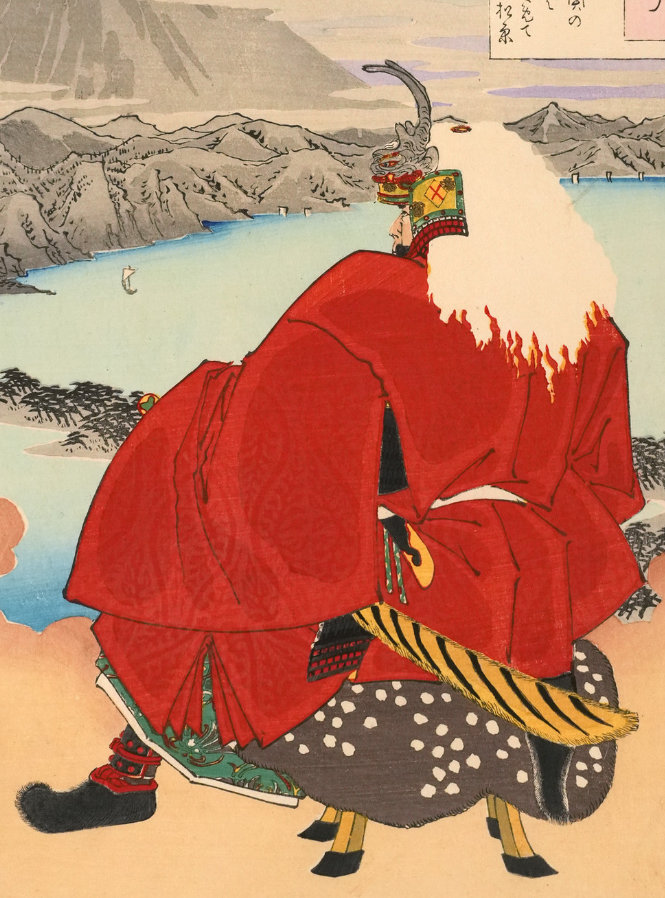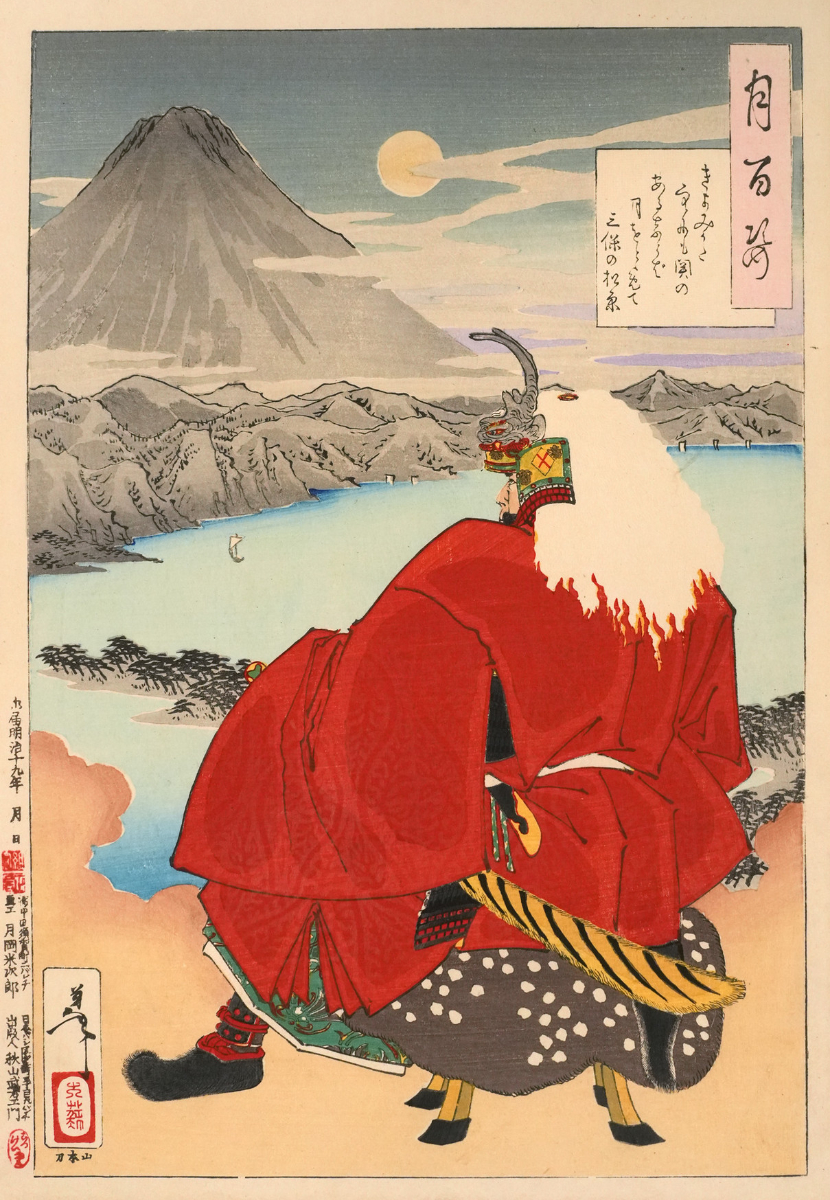Takeda Shingen (武田 信玄, December 1, 1521 – May 13, 1573) was daimyo of Kai Province during the Sengoku period of Japan. Known as “the Tiger of Kai”, he was one of the most powerful daimyo of the late Sengoku period, and credited with exceptional military prestige. Shingen was based in a poor area with little arable land and no access to the sea, but he became one of Japan’s leading daimyo. His skills are highly esteemed and on par with Mōri Motonari. Yoshitoshi’s New Forms of Thirty-six Ghosts: Takeda Katsuchiyo Killing an Old Badger in the Moonlight (1889) “… is based on an episode that took place during Takeda’s boyhood military education. Deep in study one evening, he was startled to hear the wooden horse on which his saddle was stored ask him a question about military strategy. Aware that something was not as it should be, he drew his sword and struck the saddle-horse as hard as he could. An old badger fell dead at his feet. The badger had taken the form of the saddle-horse to play a rather harmless trick on the earnest Takeda. It obviously chose the wrong person.” From Yoshitoshi’s Thirty-Six Ghosts (1983) by John Stevenson.
| Alias Takeda Shingen (武田 信玄), “The Tiger of Kai” |
| Real Names/Alt Names Takeda Katsuchiyo (boyhood name) |
| Characteristics Samurai, Historical Figures, The Renaissance, Japanese |
| Creators/Key Contributors Tsukioka Yoshitoshi, ○ |
| First Appearance Historical figure (b. 1521 – d. 1573) |
| First Publisher ○ |
| Appearance List Kōyō Gunkan, 3 vols. (1965 ed.; chronicle compiled c.1616) by Kōsaka Masanobu; Fūrin Kazan (1958) by Yasushi Inoue; A History of Japan, 1334–1615 (1961) by George B. Sansom; Ten to Chi to (天と地と, 1962; bunko 1966) by Chōgorō Kaionji — serialized 1960–62 in Shūkan Asahi, basis for NHK Taiga (1969); The Samurai: A Military History (1977) by Stephen R. Turnbull, Samurai Armies 1550–1615 (1979) by Stephen Turnbull. Film: Fuefuki River (美しき笛の川, 1960) by Keisuke Kinoshita, Samurai Banners (風林火山, 1969) by Hiroshi Inagaki. |
| Sample Read Heaven and Earth (天と地と, Ten to Chi to, 1990) [Internet Archive] |
| Description Takeda Shingen (武田 信玄, December 1, 1521 – May 13, 1573) was daimyo of Kai Province during the Sengoku period of Japan. Known as “the Tiger of Kai”, he was one of the most powerful daimyo of the late Sengoku period, and credited with exceptional military prestige. Shingen was based in a poor area with little arable land and no access to the sea, but he became one of Japan’s leading daimyo. His skills are highly esteemed and on par with Mōri Motonari. Yoshitoshi’s New Forms of Thirty-six Ghosts: Takeda Katsuchiyo Killing an Old Badger in the Moonlight (1889) “… is based on an episode that took place during Takeda’s boyhood military education. Deep in study one evening, he was startled to hear the wooden horse on which his saddle was stored ask him a question about military strategy. Aware that something was not as it should be, he drew his sword and struck the saddle-horse as hard as he could. An old badger fell dead at his feet. The badger had taken the form of the saddle-horse to play a rather harmless trick on the earnest Takeda. It obviously chose the wrong person.” From Yoshitoshi’s Thirty-Six Ghosts (1983) by John Stevenson. |
| Source Takeda Shingen – Wikipedia |




